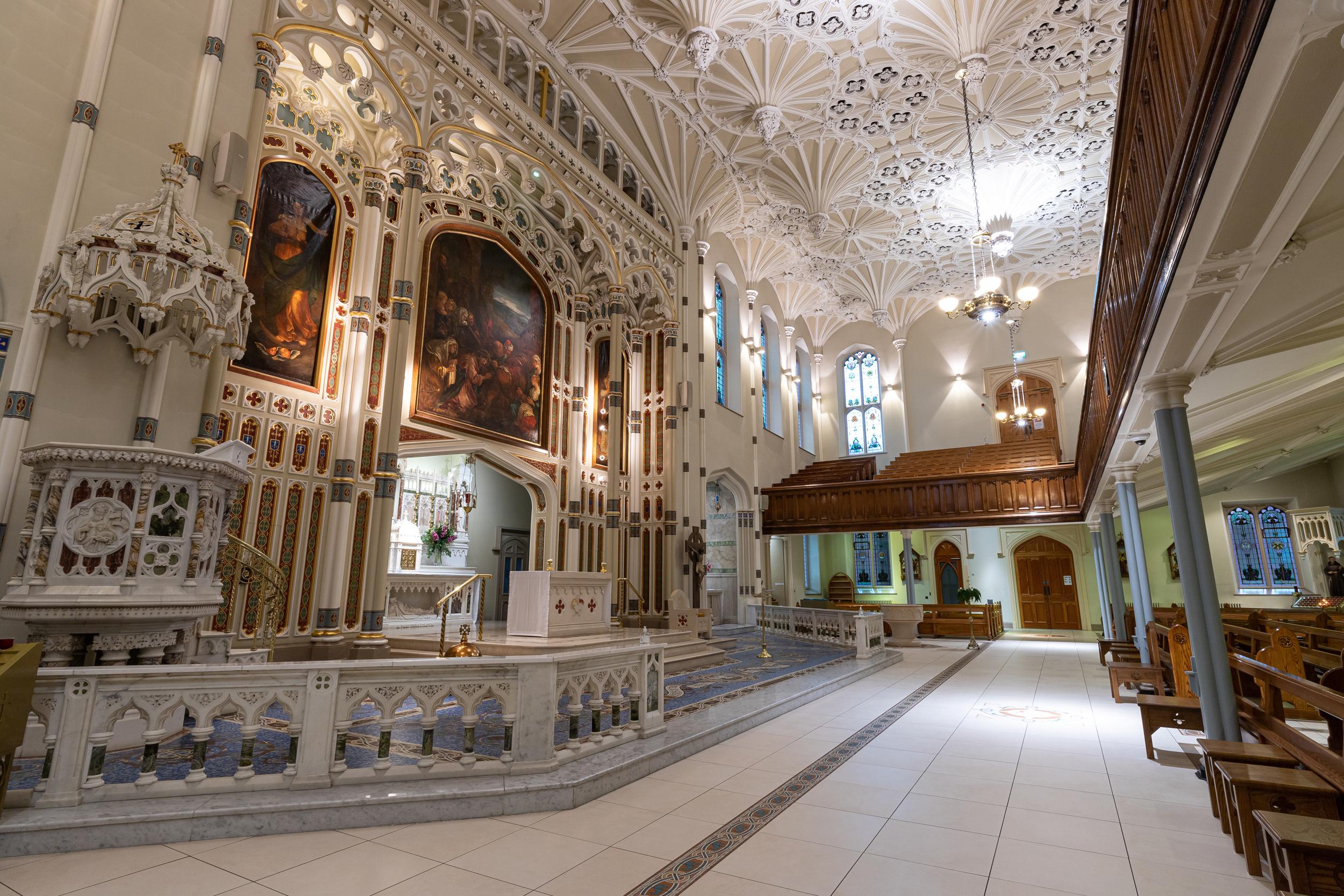May Street Presbyterian Church
Belfast, County Antrim

Hidden amongst Belfast’s streets lies a true architectural gem, St Malachy’s modest red-brick exterior gives little hint of the richly ornate interior within, a striking contrast that delights all who step inside.
Belfast, County Antrim
S. Malachy’s, a gem of Belfast’s faith heritage, stands proudly as one of the city’s most treasured landmarks. When construction of St Malachy’s began, only two other Catholic churches served Belfast’s 30,000-strong Catholic community: St Patrick’s on Donegall Street and St Mary’s on Chapel Lane. Recognising the need for additional space, St. Malachy’s was created to serve this growing congregation.
The church’s foundation stone was laid on November 3, 1841, Saint Malachy’s feast day, made possible by a generous bequest of £3,000 from Captain Thomas Griffith and a gift of land from Presbyterian Adam McClean, who transferred it to Hugh Magill 'in trust for the Catholics of Belfast'. Completed on December 15, 1844, St Malachy’s is celebrated for its stunning pendant fan-vaulted ceiling, inspired by the Henry VII Chapel at Westminster Abbey.
Music has been central to St Malachy’s tradition since its early days. In 1850, renowned Irish organ builder William Telford installed a grand organ, the same Telford who later served as an adjudicator at the Great Exhibition in London’s Crystal Palace. This historic Telford organ continues to resonate through the church, a testament to the church’s rich musical tradition. Adding to the visual beauty, the altar’s centrepiece and a portrait of Saint Malachy were painted by Austrian-Italian artist Felix Piccione.
In contrast to its ornate interior, a modest wood and brass plaque, dated 1917, serves as a poignant memorial in St Malachy’s, honouring the sailors and soldiers who fell in the Great War. This humble tribute reflects the church’s enduring commitment to remembering and praying for those lost in the conflict. Among those commemorated are approximately 4,000 Catholic men from Belfast who enlisted in the British Army’s nine Irish regiments, with many joining the 6th Connaught Rangers, fondly known as 'the regiment of choice for Belfast Catholics'.
One of the church’s unique features is its bell. The original bell cracked in 1845 and was replaced in 1868 by the largest bell in Belfast. Its powerful chime was so intense that it disrupted production at the nearby Dunville Distillery on Calendar Street! To resolve the issue, the bell was coated in felt to soften its ring, allowing the distillery to operate undisturbed. Belfast has transformed over the years, and the distillery may be a distant memory, but the resonant call of the bell still echoes through the city.
Belfast, County Antrim
Belfast, County Antrim
Step off Belfasts busy streets into a timeless place of prayer to explore its history and enjoy quiet moments of reflection in this beautiful place.
Belfast, County Antrim
Step into St Mary’s, an oasis of calm amidst Belfast's bustling streets.